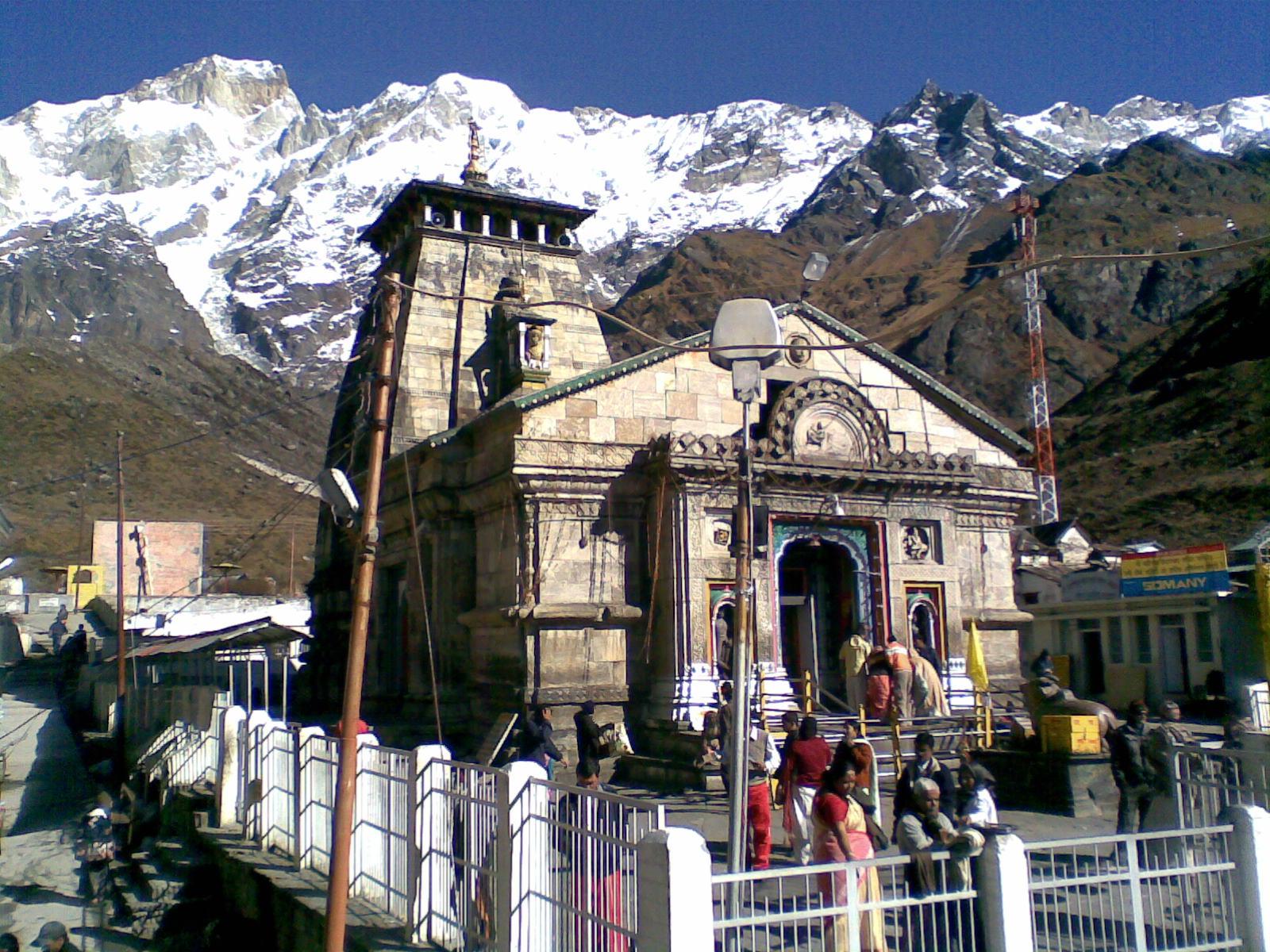
Kedarnath – Near Badrinath, Uttaranchal. This is one of the best known Shivastalams in India and is considered to be one of the most sacred pilgrimage centers of the country, located in the lofty Himalayas. It is revered as one of the 12 Jyotirlingams – the Northern most one, while the Southernmost one is Rameswaram. The spiritual leader Adi Sankaracharya is closely associated with Kedarnath. Kedarnath is a shrine steeped in antiquity, rich in legend and religious significance.
Four Himalayan shrines dedicated to Shiva have been glorified by the Tamil Tevaram Hymns composed by the Nayanmars of the 1st millennium CE. These shrines are Indraneela Parvatam in Nepal, Gowrikund, Kedarnath and Mount Kailash in Tibet. Although none of the Nayanmars visited Kedarnath, Sambandar sang its praises from Kalahasti. The Tamil hymns of the Nayanmars refer to Kedarnath as Tirukkedaram.
The Temple: Located in the Himalayas at a height of 12000 feet in awe inspiring surroundings, this small shrine is accessible by foot, only 6 months a year. The temple at Kedarnath enshrining the Jyotirlingam of Shiva opens only when the sun enters the zodiac sign of Aries and it is closed when the sun enters Scorpio. The priests then go to Ukhimath, where the worship of Kedareshwara is continued during the winter season.
Kedarnath is located on a ridge which juts out at right angles from below the 23000 feet high snowy peak of Mahapanth. Kedarnath is located on the Rudra Himalaya range.
The Rudra Himalaya range is also known as the Pancha Parvata; its five peaks are Rudra Himalaya, Vishnupuri, Bhramapuri, Udgari-Kanth and Swargarohini. It is believed that four of the Pandavas died on the last of these peaks.
Legend has it that Parvati worshipped Kedareshwar to unite with Shiva as Ardhanareeswarar. Kedara Munivar is also said to have established this shrine visited by the Pancha Pandavas.
Legend also has it that Nara and Narayana – two incarnations of Vishnu practised severe penances at Badrikashramam, in front of a Shivalingam fashioned out of earth. When Shiva appeared in front of them, they requested him to take up a permanent abode as a Jyotirlingam at Kedarnath.
Legend also has it that the Pandava princes were advised to visit Kedarnath after the great Kurukshetra battle. Shiva upon seeing the Pandavas, assumed the form of a male buaffalo and entered the earth. It is believed that the rear of its body remained here, as Kedareshwar. The front part is believed to be in Nepal. This legend says that when Shiva entered the ground, he became five fold – his hind remained at Kedar, his arms Tunganatha, his face Rudranatha, his belly Madhyameswara and his Jata Kalpeswara. These five shrines together as known as the Pancha Kedara.
The Pandavas are believed to have visited this area several times. Arjuna is believed to have come here to pray to Shiva to obtain the coveted Pasupataastra. The other Pandavas are believed to have come here in search of him, where Draupadi came across the heavenly lotus Kalyana Saugandikam, and requested Bhima to bring here some more of the same. It was during his venturing out to seek these flowers that Bhima met Hanumaan.
Tradition has it that pilgrims first visit Yamunotri and Gangotri and bring with them the holy waters from the sources of the rivers Yamuna and Ganga and offer abhishekams to Kedareshwara. The traditional pilgrim route is Haridwar – Rishikesh – Devaprayag – Tehri – Dharasu – Yamunotri – Uttar Kashi – Gangotri – Triyugnarayan – Gowrikund and Kedarnath. Alternatively, the route to Kedar from Rishikesh is via Devprayag, Srinagar, Rudraprayag and Ukhimath.
Near Kedarnath is the source of the river Mandakini. Mandakini joins Alakananda at Rudraprayag.